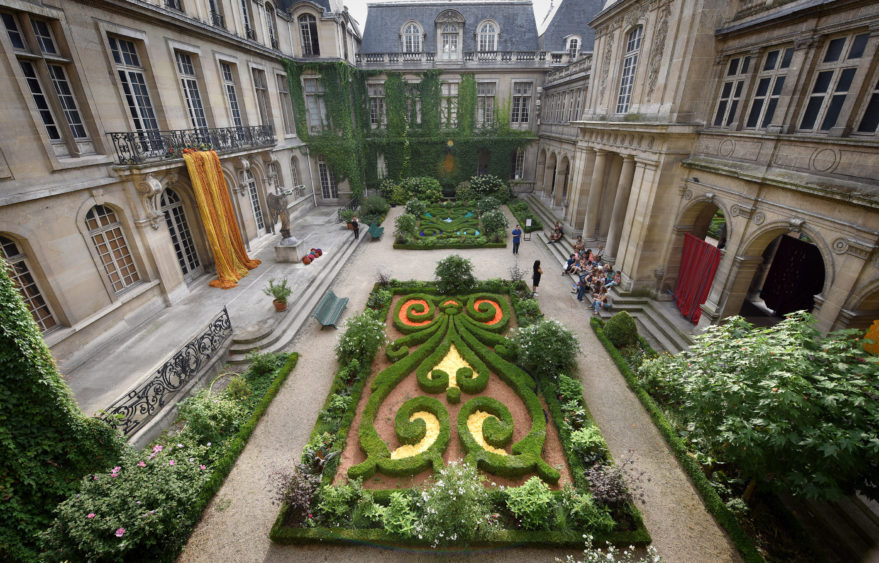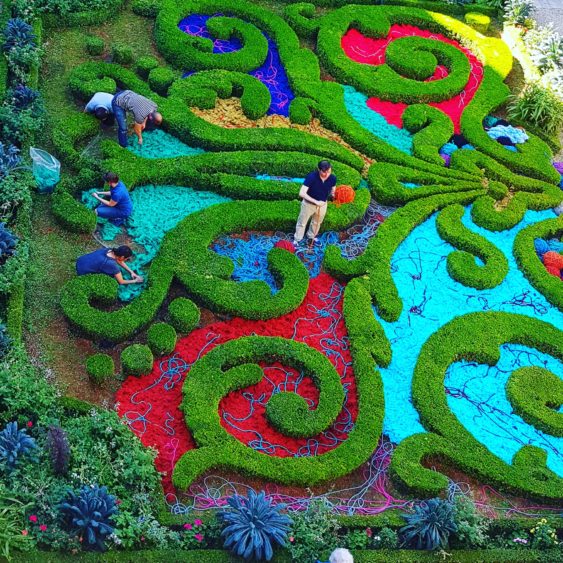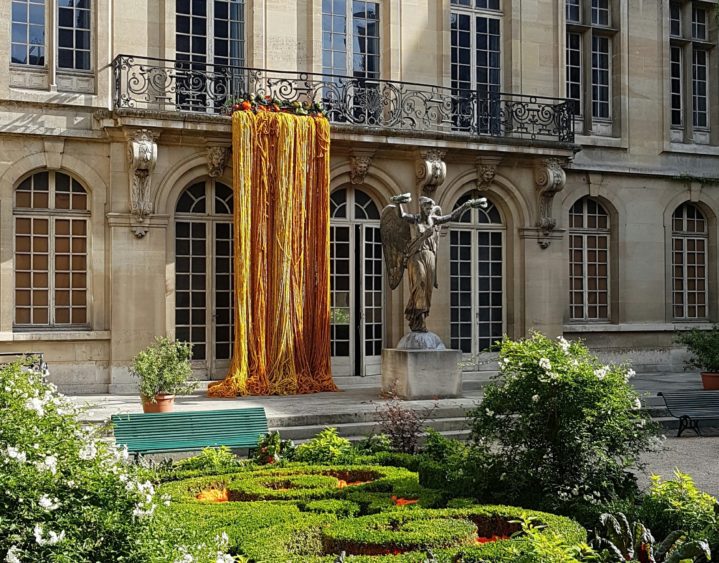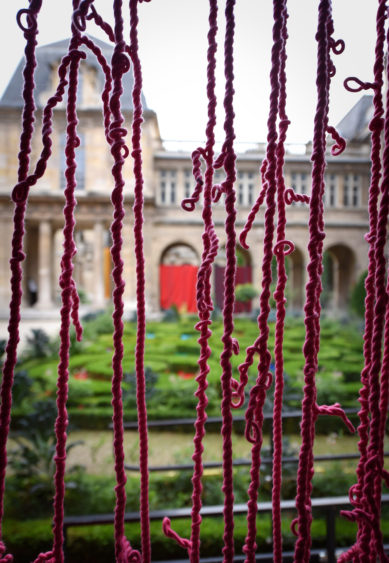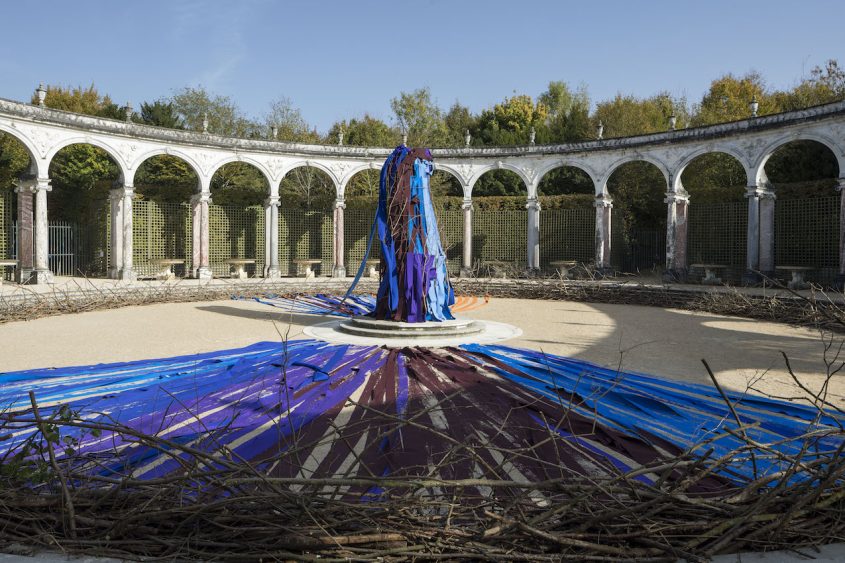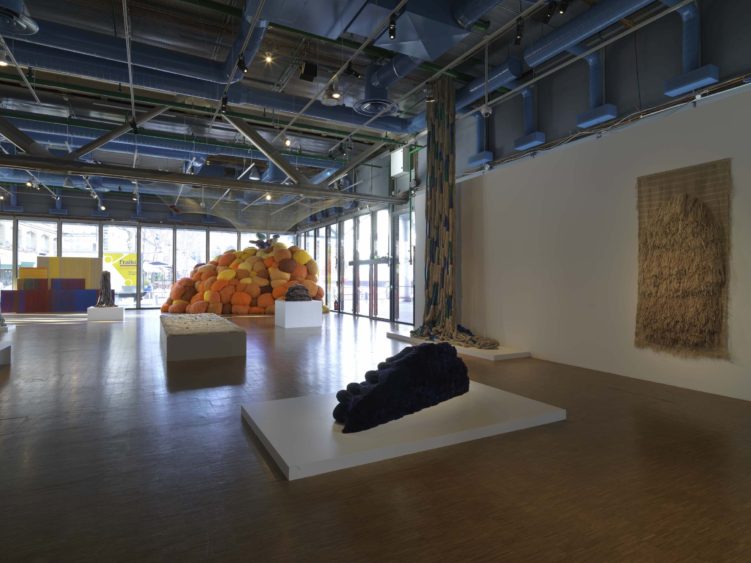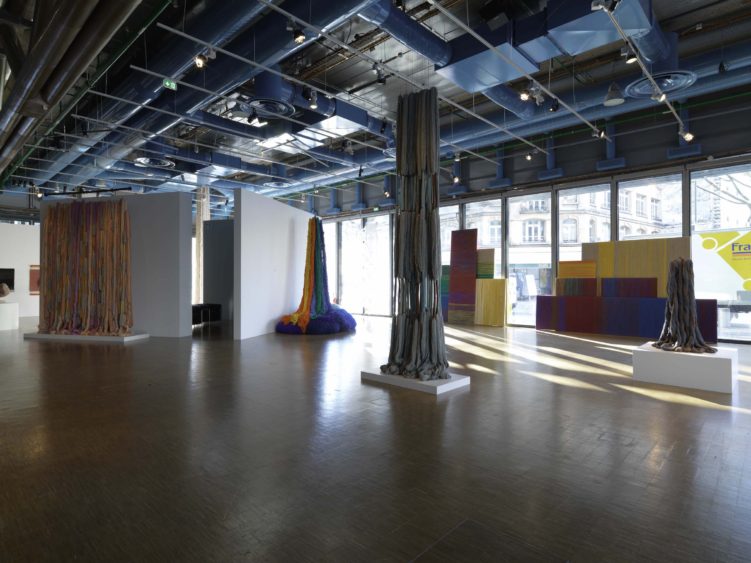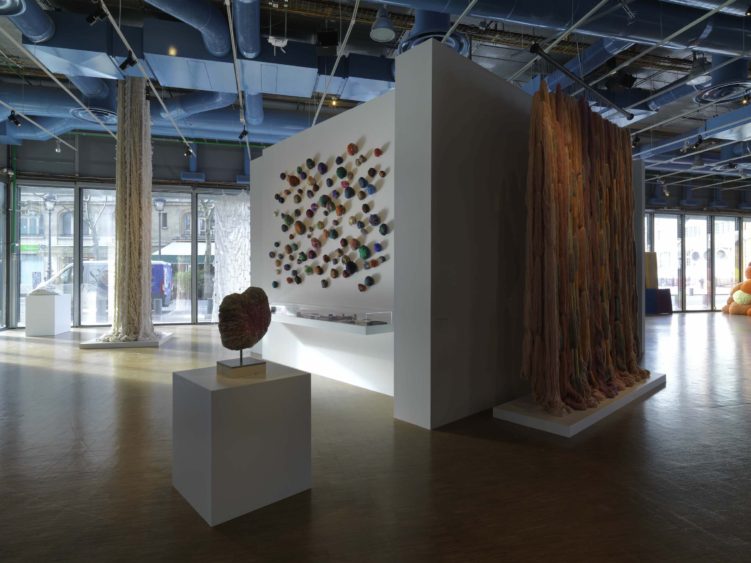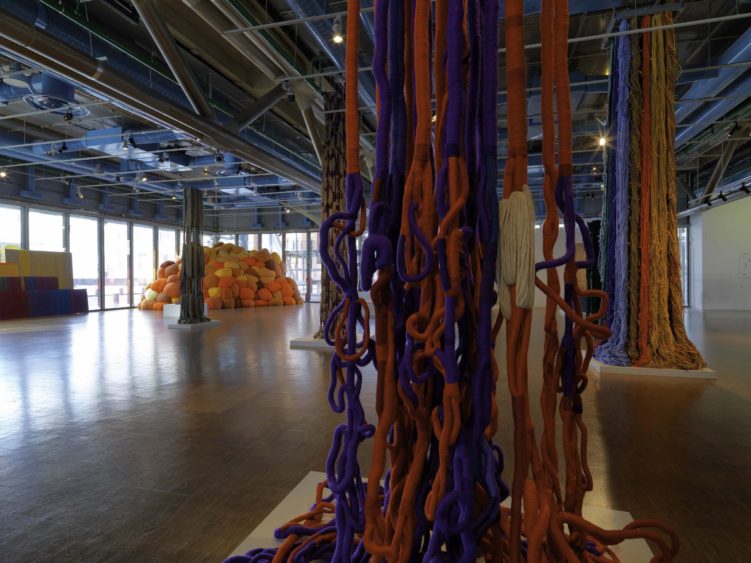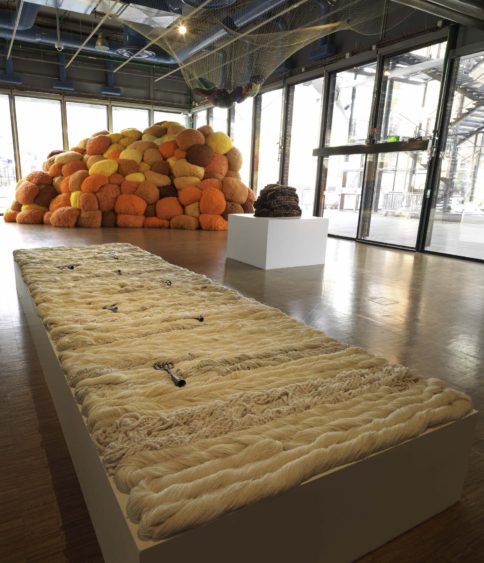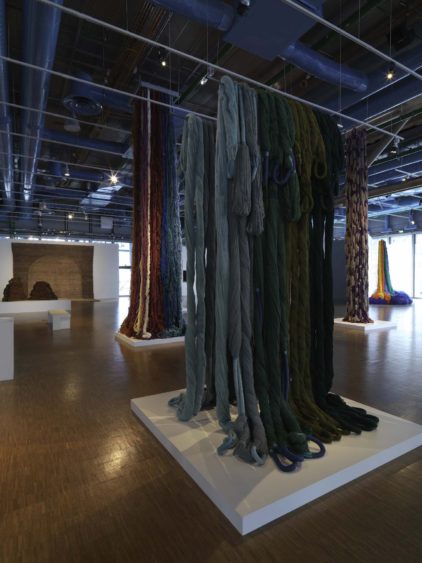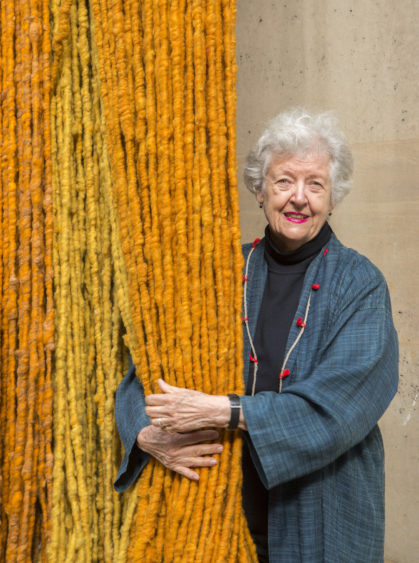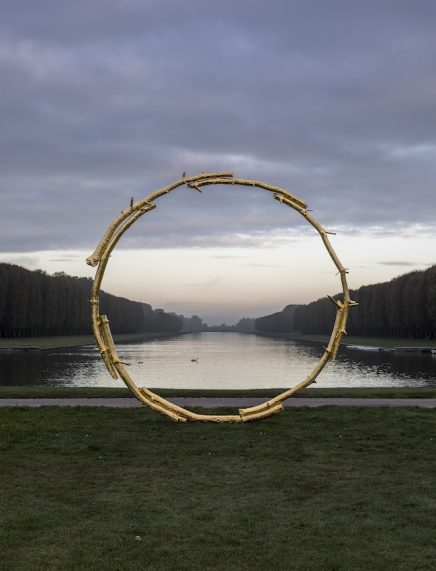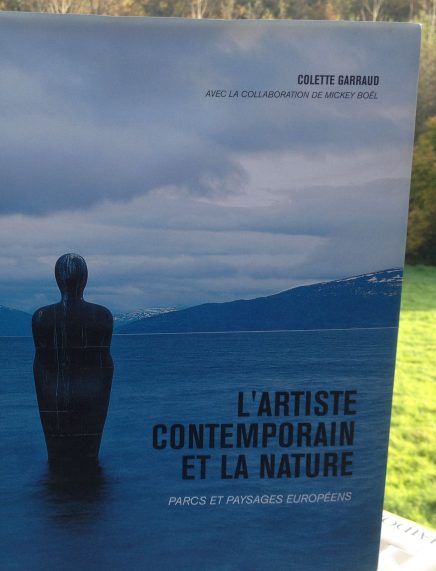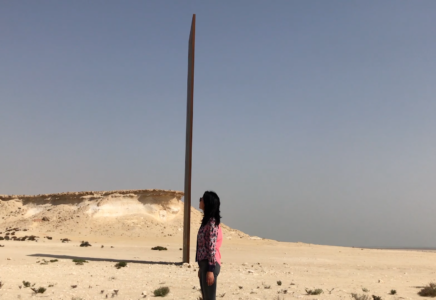Sheila Hicks: Sculpting Textile
The Centre Pompidou has invited American artist Sheila Hicks for Lignes de vie, a retrospective retracing sixty years of this pioneer in textile art. Whirlwinds of textures and colored waterfalls share the exhibition space with more intimate and smaller pieces called Minimes. Here is an invitation to dive into a universe of vegetal forms, ancestral gestures and color vibrations, and an opportunity to look back at some of the artist’s recent or current outdoor projects.
Learning
Born in 1934 in Nebraska, in the heart of the United States, Sheila Hicks studies painting at the Yale School of Arts and Architecture (Connecticut, United States). There, she is strongly influenced by the teaching of textile artist Anni Albers, painter and color theorist Josef Albers, and art historian George Kubler, one of the greatest experts in Pre-Colombian and Ibero-American art, famous for his book The Shape of Time: Remarks on the History of Things (1973). Numerous trips to South America (Venezuela, Colombia, Peru, Bolivia, Brazil, etc.) and five years spent in Mexico have fed her curiosity for pre-Colombian textile art; by meeting indigenous weavers and by visiting pre-Inca archeological sites, she discovers many techniques and materials. This is the starting point of a lifelong research on fibers, threads and fabric: Sheila Hicks observes materials, how they move, she dissects their language and creates her own, adding color, which is fundamental in her work. Her work consists mostly in bas-reliefs, tapestries and small and large-scale sculptures. Each one of her interventions, whether indoors or outdoors, involves a reflection and a dialogue with the physical and architectural context of the site. The sculpture and its environment communicate, so much so that she calls her installations « environmental sculptures ».
Lignes de vie at the Centre Pompidou
For the exhibition Lignes de vie, Sheila Hicks chose to work with curator Michel Gauthier because “he is not a fabric specialist”. This choice illustrates her refusal to limit weaving to decorative arts. “In the 60s and 70s, she wanted to be able to navigate freely between design, decorative art and art. Back then, one had to choose his/her line of work and technique. This straddling probably did not help get her the recognition she deserved”, explains Michel Gauthier. The exhibition starts outside the museum: the walls of the Galerie 3 (first level) are partially visible from the street along the Center. The color of the bundles of Sentinelles de safran catch the eye, and once inside the gallery, one cannot help but be tempted to touch. Because Sheila Hicks’ work should be touched, felt, experienced, which unfortunately is not allowed in a museum. Swirls of thread fall out of the ceiling, colors explode, shapes respond to each other. At times, one feels like in a tropical forest, surrounded by vines, tree trunks, boulders, streams…
Open air
Sheila Hicks also takes her art outside. Thanks to a pigment that contains an acrylic bond that allows her materials to withstand exterior conditions, her works can be displayed outdoors without deteriorating. In the fall of 2016, she was one of the artists invited to the Festival d’Automne (Paris) and displayed her work in the gardens of the Musée Carnavalet, the oldest municipal museum of the capital. For these two formal gardens, she created a series of site-specific installations on several levels, echoing the architecture of the site. At ground level, she weaved with the plants of the garden and covered spaces left blank by nature with pigmented fibers. On the vertical axis, she threw a waterfall of Greek wool off the central balcony and attached weaved screens to the arcades.
In June 2017 (and until March 2018), for a commission from the Friends of the High Line, Sheila Hicks installed Hop, Skip, Jump, and Fly: Escape From Gravity on the Western Rail Yards. This site-specific work is made of long tubes of monochromatic fabric placed along the old rail tracks. The tubes intertwine, overlap, each following its own more or less random path, thus evoking the frenzy of urban movements and the architectural diversity characteristic to the neighborhood.
Last fall, Sheila Hicks also participated to Voyage d’Hiver at the Palace of Versailles, a collective exhibition involving seventeen contemporary artists who transformed the groves of Louis XIV’s gardens into an open-air museum. Hicks occupied the basin of the Bosquet de la Colonnade with Proserpine en Chrysalide (2017), an installation that entirely covered François Girardon’s sculpture l’Enlèvement de Proserpine par Pluton that refers to the passage from fall to winter. The cycle of the seasons is at the core of the artist’s installation: the long strips of fabric go from orange to cold blue, evoking the passage from fall to winter. The strips start at the top of the sculpture and stretch from the center of the basin all the way to its perimeter where tree branches from the park were placed, thus creating a cosmic clock.
Sheila Hicks. Lignes de vie
From February 7th to April 30th, 2018
Galerie 3 – Centre Pompidou, Paris
1 et 2 Florence Dauly, Depuis 60 ans, l’art spectaculaire de Sheila Hicks ne tient qu’à un fil (Telerama 07/02/2018)
Hi Ema Lyman and thank you for your time on Sculpture Nature ! We have corrected the mistake. Thank you. Have a nice day :)
Greetings, kindly requesting that you spell the country “Colombia” correctly…Columbia is the university and/or the name of one of the shuttles. Thank you.
